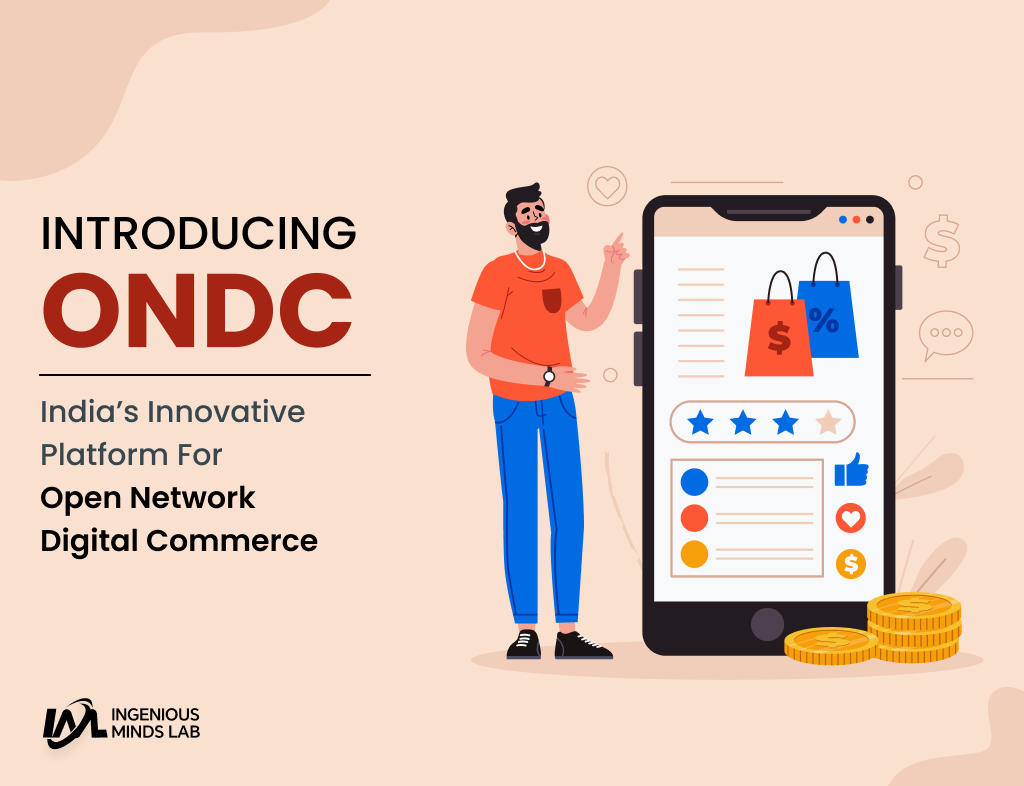What Is Open Network for Digital Commerce (ONDC)?
The Open Network for Digital Commerce (ONDC) is an innovative platform that operates on an open protocol, enabling local commerce across various segments such as mobility, grocery, food order and delivery, hotel booking, and travel. The network’s goal is to enable micro, small and medium enterprises, and small traders to get onto online platforms, create new opportunities, and curb digital monopolies.
The initiative is a non-profit company under the Department for Promotion of Industry and Internal Trade (DPIIT) of the Ministry of Commerce and Industry. ONDC allows sellers to voluntarily display their products and services across all participating apps and platforms, without being tied down to any particular platform.
The network uses open specifications and protocols, enabling buyers and sellers to transact irrespective of the applications they use. ONDC has been designed as an open-source network to help local commerce reach and engage more people through network-enabled applications.
ONDC aims to digitise the entire value chain, standardize operations, and promote the inclusion of suppliers, apart from enhancing the value and experience of consumers. The platform has been launched in five cities – Delhi-NCR, Bengaluru, Coimbatore, Bhopal, and Shillong, with plans to add 150 retailers in the pilot phase.
Tech industry stalwart Nandan Nilekani, who co-founded Infosys and helped the government with the Aadhaar biometric ID system, is part of the nine-member advisory council that advises the government on the project.
In conclusion, the Open Network for Digital Commerce (ONDC) is an innovative initiative by the Department for Promotion of Industry and Internal Trade (DPIIT) to enable micro, small and medium enterprises, and small traders to get onto online platforms, create new opportunities, and curb digital monopolies. The platform aims to standardize operations and promote the inclusion of suppliers, apart from enhancing the value and experience of consumers. With its open specifications and protocols, the network is poised to revolutionize the way local commerce is conducted in India.
The key features of the ONDC include
- Format similar to UPI: ONDC works on a format similar to the Unified Payments Interface (UPI).
- Saving data and building credit history: Traders will be able to save their data and build a credit history through the network.
- Confidentiality and privacy of data: ONDC takes measures to ensure confidentiality and privacy of data in the network. It is not mandatory for participants to share transaction-level data with ONDC.
- Democratizing digital commerce: ONDC aims to democratize digital commerce by creating an open network that enables sellers and buyers to transact digitally regardless of what platform or application they use.
- Standardized operations: ONDC protocols would standardize operations like cataloging, inventory management, order management, and order fulfillment.
- Encouraging adoption of digital means: ONDC will encourage easy adoption of digital means by those currently not on digital commerce networks.
- Pan-India discoverability: ONDC offers pan-India discoverability to sellers, regardless of their location.
- Better productivity and ROI: ONDC enables better productivity and return on investment for sellers.
- Zero upfront cost: ONDC requires zero upfront cost for sellers to join the platform.
- Lower customer acquisition costs: ONDC enables lower customer acquisition costs for sellers.
- Transferable reviews and ratings: Trust built on ONDC platforms in the form of ratings is transferable, which keeps sellers free from being bound.
- Transparency on selling policies: ONDC provides 100% transparency on selling policies.
The Benefits of the ONDC include
ONDC aims to raise e-commerce penetration from nearly 8 percent to 25 percent in the next two years, according to Reuters. It also aims to sign up 90 crore buyers and 12 lakh sellers within the next five years while adding $48 billion to gross merchandise value.
The ONDC platform offers several benefits to both sellers and buyers. For sellers, it provides equal business opportunities by catering to a nationwide audience, and it enables small businesses to be discoverable over the network and conduct business without being governed by specific platform-centric policies. This allows for multiple options for small businesses to conduct business and encourages easy adoption of digital means by those not currently on digital commerce networks.
Other benefits for sellers include:
- Pan-India discoverability
- Better productivity and ROI
- Zero upfront cost
- Lower customer acquisition costs
- Transferable reviews and ratings
- 100% transparency on selling policies
- Freedom to choose your prices, audience, and terms of service
For buyers, ONDC offers a single open digital marketplace where they can connect with millions of sellers for an optimum customer-vendor relationship. And the best part is that even the smallest shop in the most isolated part of the country can become an ONDC participant and start selling to pan-India customers.
The overall benefit of ONDC is that it seeks to democratize digital commerce in India, moving it from a platform-centric model to an open network. It aims to create a level playing field for e-commerce behemoths such as Amazon, Flipkart, and offline traders who have been crying foul at the unfair trade practices of these e-tailers. The platform will also be compliant with the Information Technology Act, 2000 and designed for compliance with the emerging Personal Data Protection Bill.
How ONDC Works?
The Open Network for Digital Commerce (ONDC) works by bringing together buyers, sellers, and facilitators on a single network. To be a part of the ONDC, an enterprise must play one or more of the following roles:
- Connecting buyers to the network: This involves building applications or websites that customers will use to browse and search for products that are on sale on the ONDC network. Currently, only Paytm has built a buyer-side interface.
- Connecting sellers to the network: This role involves building applications that will allow sellers to access the ONDC network, put their products up for sale, and accept orders. These facilitators have also been tasked with pitching ONDC to merchants.
- Gateway: This involves developing applications that will broadcast the search request received from buyer-side apps to seller-side apps listed on the ONDC registry, based on search criteria.
- Technology services: This role involves providing software and technical add-ons for the other three roles.
This approach allows consumers and sellers to choose which apps they want to use to access a single network instead of concentrating power with a handful of players. It also keeps government involvement to a minimum.

